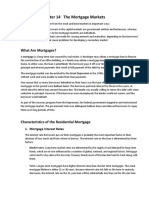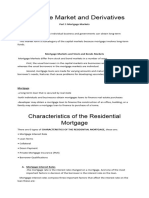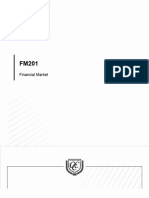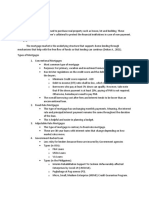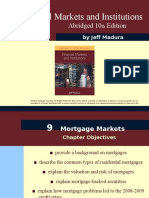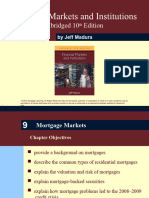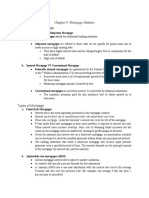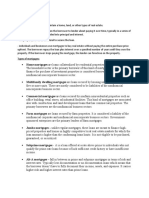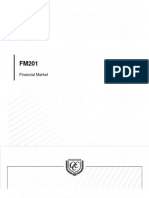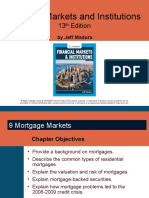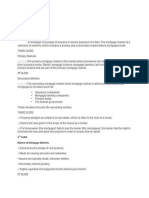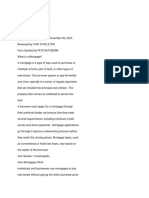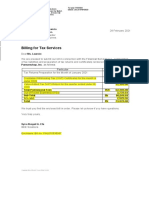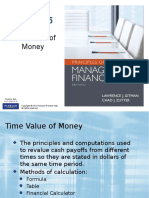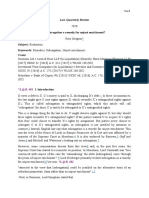0% found this document useful (0 votes)
86 views4 pagesChapter 10 - Summary
This document discusses the mortgage market and various types of mortgages. It begins by explaining that mortgages are long-term loans used to finance real estate that are paid off over time through monthly principal and interest payments. It then describes key characteristics of residential mortgages including interest rates, loan terms, collateral, down payments, private mortgage insurance, and borrower qualification processes. The document also outlines various types of mortgages such as conventional, fixed-rate, adjustable-rate, and reverse mortgages. Finally, it briefly discusses institutions that provide mortgages and the process of securitizing mortgages to sell in the secondary market.
Uploaded by
jsgiganteCopyright
© © All Rights Reserved
We take content rights seriously. If you suspect this is your content, claim it here.
Available Formats
Download as DOCX, PDF, TXT or read online on Scribd
0% found this document useful (0 votes)
86 views4 pagesChapter 10 - Summary
This document discusses the mortgage market and various types of mortgages. It begins by explaining that mortgages are long-term loans used to finance real estate that are paid off over time through monthly principal and interest payments. It then describes key characteristics of residential mortgages including interest rates, loan terms, collateral, down payments, private mortgage insurance, and borrower qualification processes. The document also outlines various types of mortgages such as conventional, fixed-rate, adjustable-rate, and reverse mortgages. Finally, it briefly discusses institutions that provide mortgages and the process of securitizing mortgages to sell in the secondary market.
Uploaded by
jsgiganteCopyright
© © All Rights Reserved
We take content rights seriously. If you suspect this is your content, claim it here.
Available Formats
Download as DOCX, PDF, TXT or read online on Scribd
/ 4



